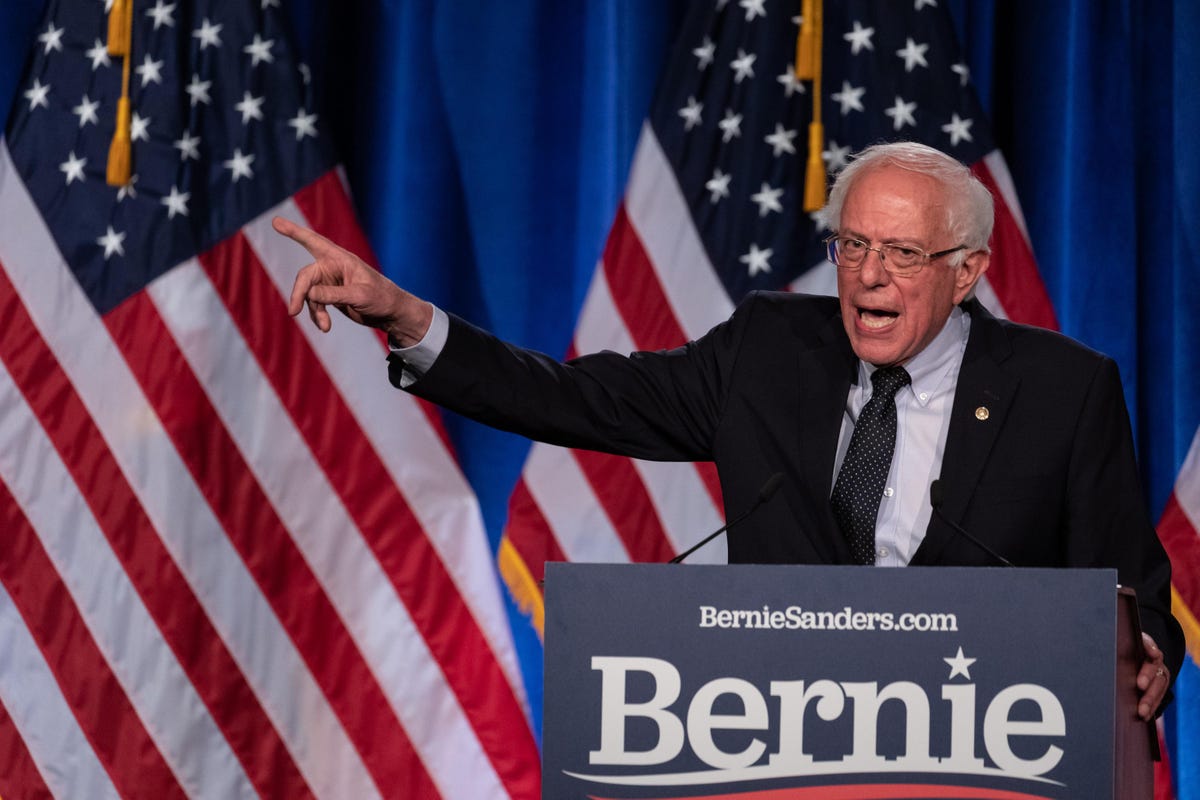Under Government Health Care, The Doctor Won't See You Now – Forbes

U.S. presidential candidate Sen. Bernie Sanders delivers a speech on his Medicare for All plan, … [+]
NurPhoto via Getty Images
In less than three weeks, the federal public health emergency for COVID-19 is set to expire. Some experts worry that the end of the emergency could unleash a flood of pent-up demand for health careâand add more stress to a health system already stretched thin.
That’s because thousands of Americansâparticularly seniors and those at higher risk of severe cases of COVID-19âpostponed care during the pandemic. Many may look to reschedule their appointments when the public health emergency ends. The rush could yield long waits for routine care, the thinking goes.
This is a once-in-a-generation concern in the United States. But it’s a fact of life in the United Kingdom’s single-payer system.
Congressional Democrats are planning to renew their calls for importing single-payer health care stateside. The House Oversight Committee is holding a hearing on the idea March 29, and Sen. Bernie Sanders, I-Vt., has promised to reintroduce his Medicare for All bill soon.
The latest data from the United Kingdom’s National Health Service should stop them in their tracks. More than 6 million people across the Atlanticâa record highâare on waiting lists for routine care. Nearly 24,000 patients have been waiting more than two years for necessary hospital treatment.
Patients are stuck waiting no matter how serious their condition is. As of January, one-quarter of patients with suspected cancer cases were waiting over two weeks to see a specialist. Almost one-third of cancer patients are waiting more than two months to start treatment.
Wait times for mental health services are also soaring. One patient told The Huffington Post he considers himself “lucky” to have received mental health support after waiting one year. He had previously been on a wait list for 18 monthsâand ended up moving before he was able to get mental health care.
NHS officials say wait times will get worse before they get better. Delays in hospital treatment aren’t expected to ease for at least two years. Nearly 11 million peopleâroughly one in five Britonsâcould be in treatment queues by 2024.
Of course, the pandemic has contributed to the strain on the U.K. health system. But long waits have plagued the NHSâand all single-payer systemsâlong before COVID-19.
There were nearly 4.5 million people waiting for hospital treatment in September 2019, months before the United Kingdom confirmed its first COVID-19 case. In fact, the NHS has failed to hit wait targets for non-urgent care since February 2016. It hasn’t met key goals for timely cancer care since 2014.
Now, two years into the pandemic, wait times are so inexcusable that U.K. Health Secretary Sajid Javid is considering a new approach. He’s expected to announce a plan to get patients who have spent 18 months or more waiting for surgery out of NHS treatment queuesâby paying for them to receive care through a private provider instead of a government one.
In other words, U.K. officials are admitting that their government-run system is incapable of providing patients with timely, quality care.
If only U.S. progressives pining for government-run health care would come to the same conclusion.
Since they don’t have enough votes to pass national single-payer legislation through Congress, Democrats are taking a piecemeal approach. President Biden made a government-run public health insurance option a centerpiece of his campaign. Three states have implemented public options within their borders. Sixteen more are considering similar plans. Some local governments even have their own public health insurance plans.
The results have been disastrous.
Consider the recent news out of my home state, California. Health officials just announced $55 million in fines against Los Angeles County’s government-run health plan for low-income residents. The punishment came after a state analysis found patients were waiting an average of 89 days to see a specialist at publicly funded health facilitiesânearly six times as long as the state’s 15-day requirement.
That’s unacceptable. But any wait under 90 days would be a miracle in a single-payer system. If Democratic lawmakers get their way, U.S. patients could soon be hoping for such miraclesâlong past the end of the pandemic.







